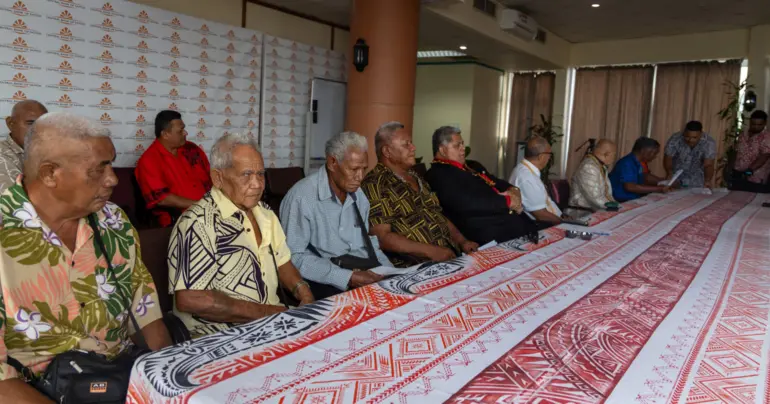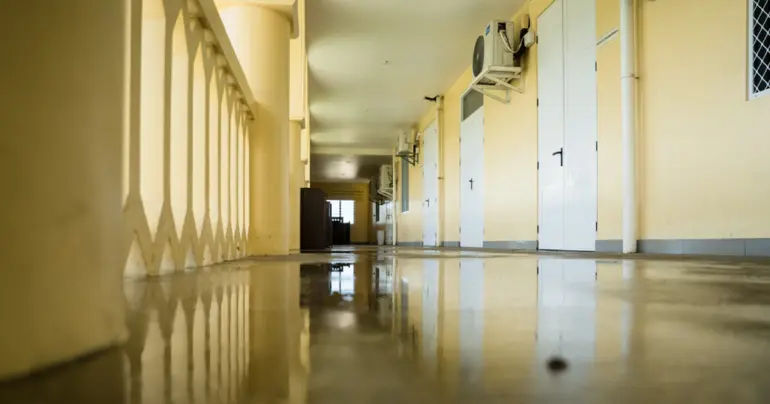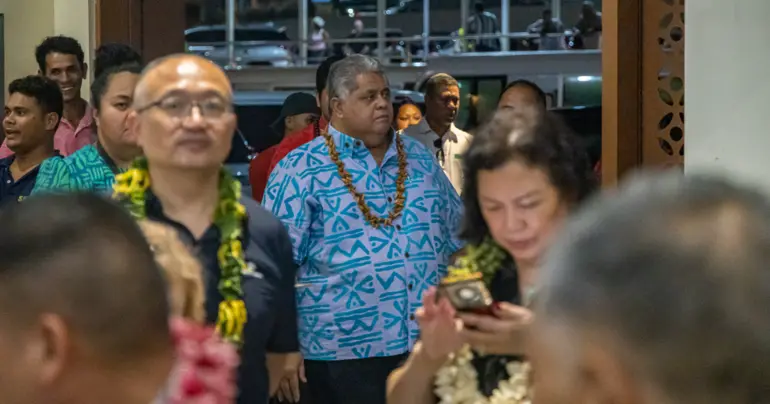Support Meteorological Services to save lives in times of disaster
 By Alexander Rheeney
•
05 August 2019, 10:38PM
By Alexander Rheeney
•
05 August 2019, 10:38PM
The 5th Meeting of the Pacific Meteorological Council (PMC-5) gets underway this morning in Apia for five-days of deliberations.
The conference – brings together PMC members, senior government officials from SPREP member countries and development partners, CROP, United Nations agencies and various other partners – to “discuss, promote and explore opportunities and strengthen weather, climate, water and ocean services in the context of sustainable development”.
For a country and a region that continues to be vulnerable and at the mercy of the forces of nature, we welcome the conference participants and look forward to the outcomes, when the summit concludes on Friday.
Samoa has had its share of natural disasters over the years – these include droughts, flooding, tropical storms and cyclones – whose cost to the local economy, including damage to public infrastructure run into the millions.
To put this in perspective, the 2009 tsunami which claimed 143 lives cost the Samoa Government $309 million tala, and Cyclone Evan in 2012 cost the Government $465 million tala. These are unbudgeted cost that the Government had to cater for back then. Cyclone Gita in February last year left Samoa’s Electric Power Corporation with a $10 million tala bill, following extensive damage to electricity poles, lines and electricity generators.
The loss of lives, the damage to public infrastructure, and the cost to the local economy – which impacts on the ability of families to put food on the table – justifies the need for the Government in Samoa and around the region to invest in and support the work of their Meteorological Services. The work of the Meteorological Services can often be the difference between life and death for citizens, as communities in the Pacific continue to be challenged and often overwhelmed by extreme weather conditions brought on by climate change.
Revelations in today’s edition of the Samoa Observer by the directors of Fiji's Meteorological Service, Misaeli Funaki, and the Solomon Islands Meteorological Services' David Hiriasia – who are both in Apia to attend the 5th Pacific Meteorological Council conference – is a challenge that is not restricted to the two countries. Meteorological Services, like other government services in the Pacific, are facing funding constraints and rely on support from donors for capacity building programmes or to maintain their services.
We thank donor partners such as Australia and Japan for their continued support as well as regional and international agencies such as SPREP and the World Meteorology Organisation. But we must also take ownership of our development challenges in the Pacific, and allocate funding and resources from our own budgets to support the work of local Meteorological Services.
Numerous studies have been done over the years in various countries on the benefits of investing in local Meteorological Services. Thanks to the Pacific Community (SPC) and the World Meteorological Organisation (WMO), a study which was commissioned and published in March 2014 into the impact of meteorological services and detailed how “improved warnings” can make a difference to both the community and businesses.
The study stated that: “A 1 per cent reduction in damage from improved warnings would generate regional (participating country) cash savings of USD 3.62 million. Compared to a 10-year investment to sustain the SWFDDP (Severe Weather Forecasting and Disaster Risk Reduction Demonstration Project for the South Pacific), this would generate a payoff of USD 6 saved for every USD 1 invested in maintaining the project.”
And added that: “A 1 per cent reduction in damage to Fiji commercial cash crops alone would generate an estimated payoff of USD 2 for every dollar invested. The existence of the SWFDDP at the time of the 2009 Nadi and Ba floods could have saved businesses and families to the order of FJD 2 – 11.8 million (depending on how well people respond to the improved forecast) – a nominal payoff of 3 – 20 dollars saved per dollar invested.”
But according to the SPC-commissioned study, the benefits of investing in meteorological services would be dependent on two factors: effective communication of the warnings and effective response by the impacted community to the warnings.
We note the study’s direct reference to “effective communication” of the warnings and must commend Samoa’s Meteorological Services under the Ministry of Natural Resources and Environment (MNRE) for continuing to be proactive, in terms of their use of various communication platforms to reach out to the public. Their use of the mainstream media and ever popular social media platforms such as Facebook are steps in the right direction.
Have a lovely Monday Samoa and God bless.
 By Alexander Rheeney
•
05 August 2019, 10:38PM
By Alexander Rheeney
•
05 August 2019, 10:38PM










